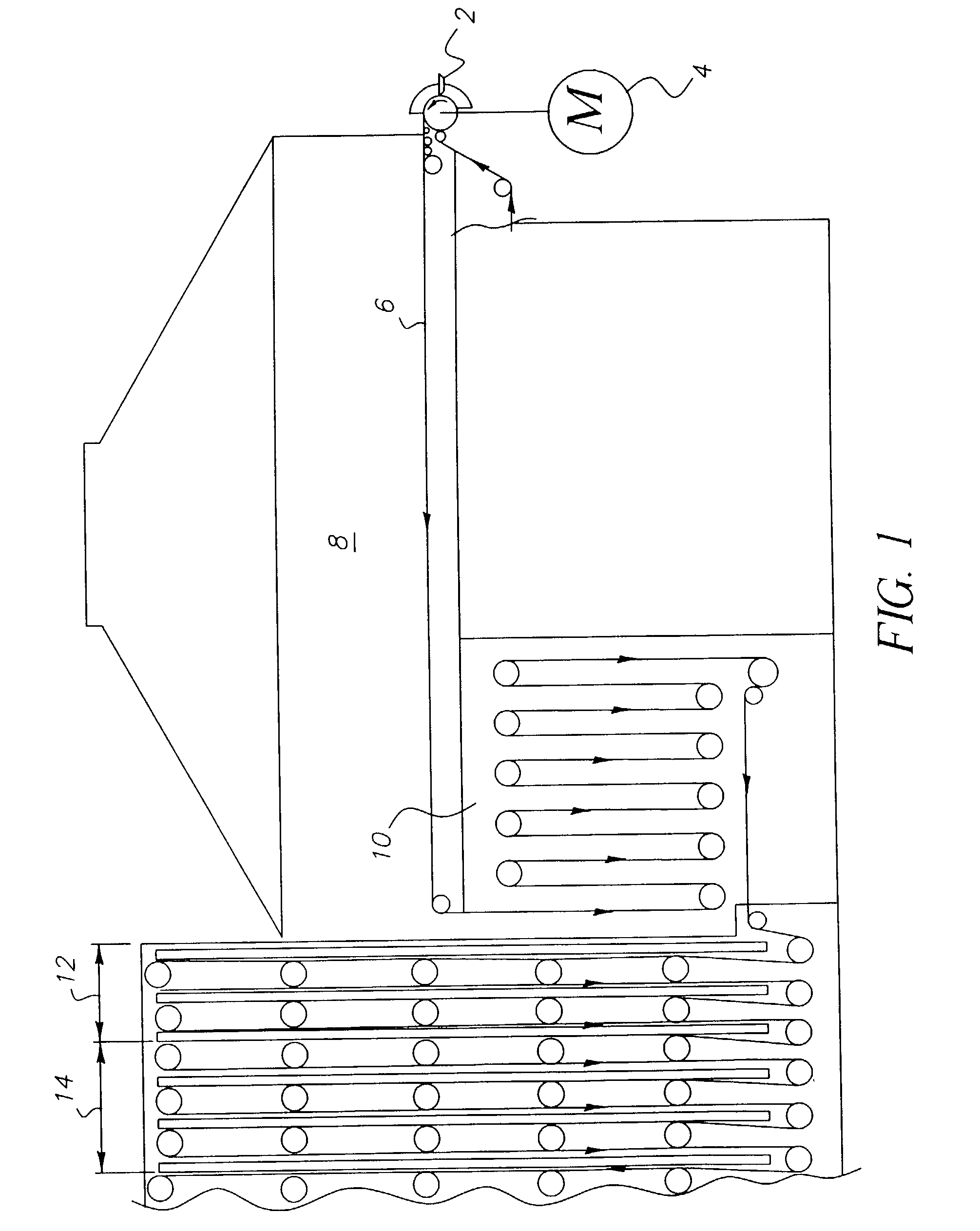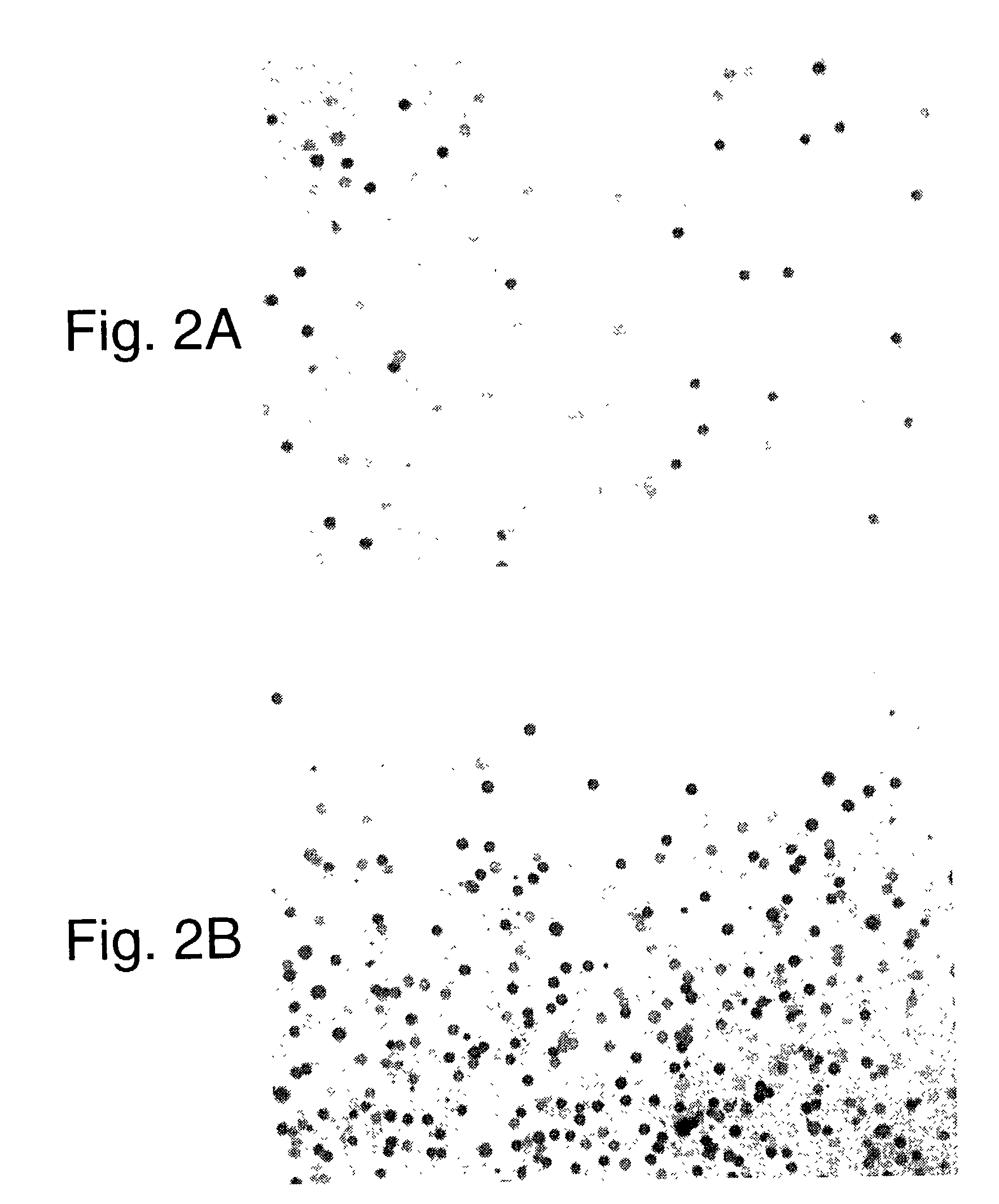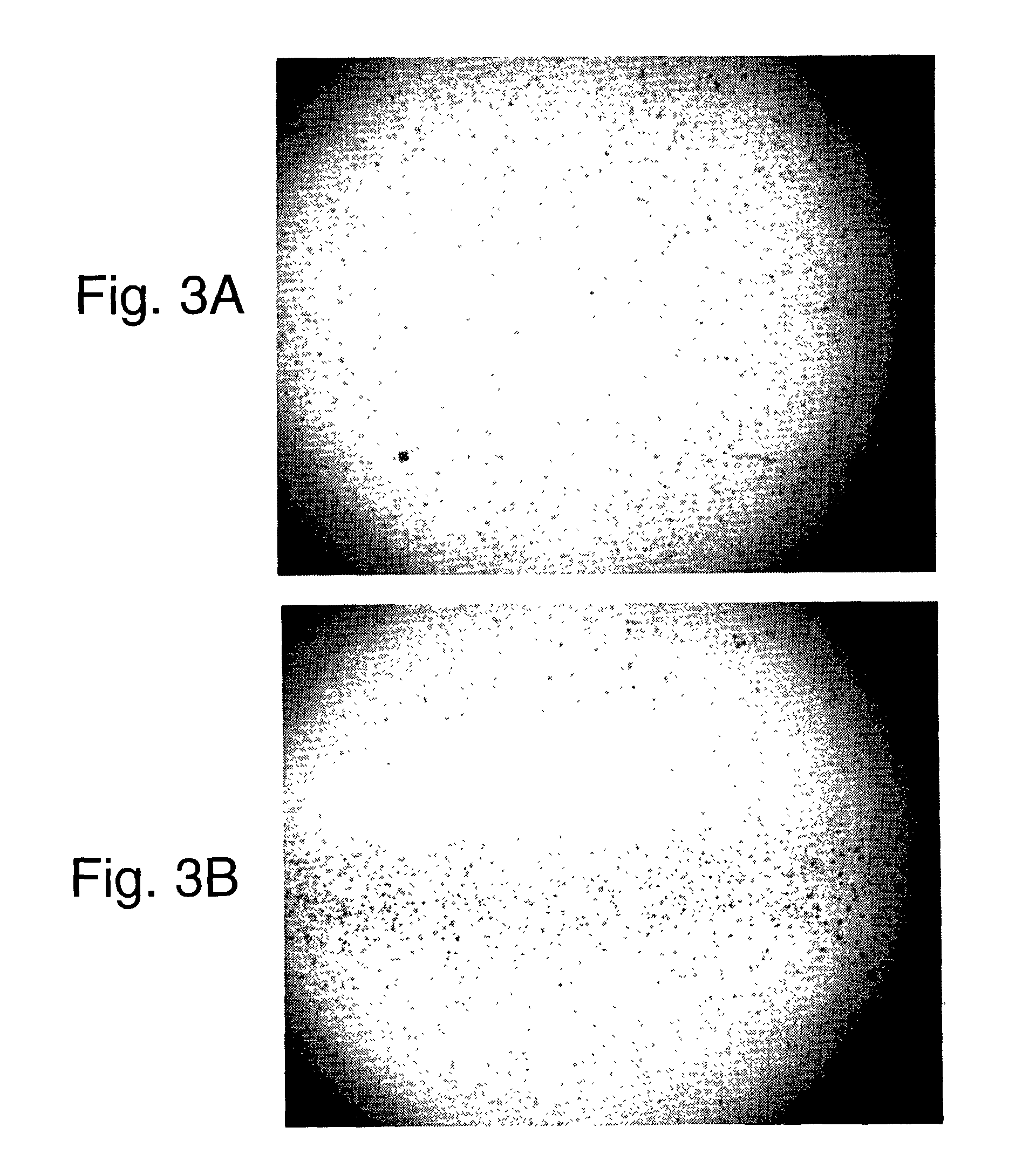Random array of micro-spheres for the analysis of nucleic acids
a nucleic acid and random array technology, applied in the field of biological microarray technology, can solve the problems of high manufacturing cost, high method cost, and inability to accurately analyze nucleic acids, and achieve the effects of simple nucleic acid analysis, less cost, and cost saving
- Summary
- Abstract
- Description
- Claims
- Application Information
AI Technical Summary
Benefits of technology
Problems solved by technology
Method used
Image
Examples
examples 1
[0034]This example illustrates the influence of the polymer on gelation or sol-to-gel transition of a formulation containing colored micro-spheres or beads.
[0035]Twenty four grams of a 4% aqueous suspension of polystyrene beads prepared by emulsion polymerization and having a mean size of 9.5 micrometers was combined with 0.48 grams of poly(vinyl alcohol)(75% hydrolyzed, molecular weight 2000).
[0036]A suspension of magenta colored beads was prepared by first dissolving 0.084 grams of Dye 1 in 0.08 grams of toluene and 7.92 grams of acetone. From the above suspension of polystyrene beads containing poly(vinyl alcohol) an amount of 8.16 grams was then added slowly (drop-wise) to this solution of the dyes while stirring to prepare a suspension of colored beads. The suspension of colored beads was then filtered using a porous cotton filter, poured into a dialysis bag (12,000 to 14,000 molecular weight cut off) and washed with distilled water for one hour. After washing, the suspension o...
example 2
[0043]This example illustrates the incorporation of Cyan dye (Dye 2) into polymeric beads at different levels.
[0044]A suspension of Cyan colored beads was prepared by first dissolving 0.001 grams of dye 2 in 0.05 grams toluene and 4.95 grams acetone. 2.5 grams of a 4% aqueous suspension of polystyrene beads prepared by emulsion polymerization and having a mean size of 9.5 micrometers was then added slowly (drop-wise) to this solution of the dyes while stirring to prepare a suspension of 1% dye loaded cyan dye. The suspension of colored beads was then filtered using a porous cotton filter, poured into a dialysis bag (12,000 to 14,000 molecular weight cut off) and washed with distilled water for one hour. The concentration of cyan beads in the suspension after this final step was 0.78%.
[0045]Suspensions of the other 5 levels of cyan dye incorporated into the beads were prepared in a similar manner using 0.002 grams dye 2, 0.006 grams dye 2, 0.007 grams dye 2, 0.009 grams dye 2, and 0....
example 3
[0047]This example illustrates the incorporation of other three dye 3 into polymeric beads.
[0048]A 4% aqueous suspension of 2.5 grams polystyrene beads prepared by emulsion polymerization and having a mean size of 9.5 micrometers was combined with 0.48 grams of poly(vinyl alcohol)(75% hydrolyzed, molecular weight 2000).
[0049]A suspension of Magenta colored beads was prepared by first dissolving 0.01 grams of dye 1 in 0.05 grams of toluene and 4.95 grams acetone. From the above suspension of polystyrene beads containing poly(vinyl alcohol) an amount of 5.00 grams was then added slowly (drop-wise) to this solution of the dyes while stirring to prepare a suspension of 5% dye loaded Magenta dye. The suspension of colored beads was then filtered using a porous cotton filter, poured into a dialysis bag (12,000 to 14,000 molecular weight cut off) and washed with distilled water for one hour. The concentration of cyan beads in the suspension after this final step was 2.59%.
[0050]Suspensions...
PUM
| Property | Measurement | Unit |
|---|---|---|
| Percent by mass | aaaaa | aaaaa |
| Diameter | aaaaa | aaaaa |
| Diameter | aaaaa | aaaaa |
Abstract
Description
Claims
Application Information
 Login to View More
Login to View More - R&D
- Intellectual Property
- Life Sciences
- Materials
- Tech Scout
- Unparalleled Data Quality
- Higher Quality Content
- 60% Fewer Hallucinations
Browse by: Latest US Patents, China's latest patents, Technical Efficacy Thesaurus, Application Domain, Technology Topic, Popular Technical Reports.
© 2025 PatSnap. All rights reserved.Legal|Privacy policy|Modern Slavery Act Transparency Statement|Sitemap|About US| Contact US: help@patsnap.com



